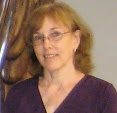Thursday, December 28, 2017
Teacher Editing, Part 2
Teacher editing happens in our ESL Young Writers writing workshops just before students prepare the
final draft of their personal experience pieces. It is the last of several
interventions we make in the students’ writing process. The first intervention is
during rehearsal and the second is when students take their finished first drafts
to a content conferencing group.
In content conferencing, authors read their work aloud for peer
response. Listeners ask questions to resolve any confusion they sense and help
authors realize changes that would make their second drafts more effective and
clearer. To put everyone on the same playing field of ideas and organization, no
one is allowed to comment about anyone’s English at this stage. There’s a real
stigma in Sierra Leone about making mistakes in English, and we don’t tolerate
such ridicule in our clubs.
It is the group’s responsibility help authors tell their
stories clearly. A facilitator should be present in every content conference to
make sure the students are asking “why” and “how” or “I didn’t understand”
questions for discussion, rather than flinging out gotchas (What is your father’s
name? How many doctors were in the hospital? What time was it?) Once the
student discussion has petered out, the facilitator can ask any important
questions that the students may not have thought of. The whole interactive
process is an extremely important part of the language learning that goes on in
the club.
I am coming around to the point made in Part 1, that
facilitators feel too much pressure during teacher editing just before the
final draft. In trying to edit both storytelling and written devices, they
actually pay more attention to mechanical errors such as punctuation and
capitalization. Therefore, I think we will move in our Young Writers clubs toward editing grammatical storytelling devices
in our content conferences. Facilitators can raise one or two of the following
discourse-level language points they hear a need for, and specify the place in
the story where they heard this problem(s). The whole group would benefit from a discussion of these factors that affect their oral delivery:
o
Avoid repeating a noun you have recently
mentioned—use a pronoun instead.
o
First use indefinite articles (some, a, a lot of)
to refer to an unknown object or person; then use a definite article (the) to
refer to it.
o
Use sequence-signaling words like later, ago, and before, as well as time expressions like at night and the next morning
to make chronology clear.
o
Tell your story in the past tense, primarily.
o
Distinguish the meanings of but, so and and.
o
If you want to use a person’s name in the story,
introduce it the first time that person is mentioned and then continue to use
the name from then on.
Note that the list contains only discourse-level grammar
strategies. They are the glue—the cohesion and coherence—that makes content
and organization hang together. That’s
why they belong in a content conference.
Following the content conference, students go on to
revision, or writing a second draft that incorporates their changes. Every
second draft should go back to the group for a second content conference, to
check that the revision happened. Only those Young Writers who have made good strides with revision should move
on to self-, peer-, and then an easier teacher editing.
Subscribe to:
Post Comments (Atom)


No comments:
Post a Comment
We look forward to hearing from you!